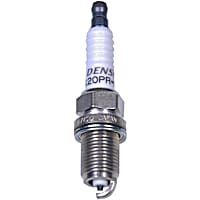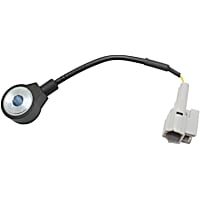If you want to buy a small and comfortable SUV, the Subaru Forester is a great option and is surely worth every penny. It is known for its well-rounded performance, which prioritizes fuel-economy and responsive handling. According to CarEdge.com, it also has an impressive resale value. It holds its value well compared to other vehicles, depreciating only 47% after five years.
Are Subaru Foresters Reliable?
The Subaru Forester is rated well in terms of overall reliability. RepairPal gives it a 3.5 out of 5.0, noting that its average annual repair and maintenance cost may be around $632. The Forester is a long-lasting vehicle. It can easily go beyond 150,000 miles on average, but it can also last over 250,000, as long as it’s well-maintained and is kept to its proper service schedule.

Top Subaru Forester Problems
Despite being considered as a reliable compact SUV, the Subaru Forester has its share of problems. Here are the most commonly problems reported about the Forester:

Air Conditioning (A/C) Failure
The 2017 Subaru Forester’s air conditioning problems are pretty widely known. Many owners of this model year have reported hot air blowing out of their A/Cs, which ultimately progressed to total A/C failure. According to reports, the issue may be caused by a bad A/C condenser. Some owners reported that they simply needed to recharge their system to get it going again, but the issue may pop up again every 2 or 3 years. Other owners have shared that they were able to resolve the issue by getting a condenser replacement. This repair may get expensive, depending on the diagnosis as well as component and labor cost. It’s highly recommended to consult a mechanic to get an accurate estimate.

Transmission Defects
The 2017 Subaru Forester models with CVT transmissions are reported to have intense shuddering and jerking when shifting gears. Subaru said this is caused by insufficient CVT fluid. It said that the fluid is not filled up to the standard level, causing air vacuum noise and increasing the possibility of chain slip in different driving conditions. Technical Service Bulletin (TSB) no.10117559 was released in August 2017 to address the problem.
Excessive Oil Consumption
One of the most common problems with the 2014 Subaru Forester is its high oil consumption. Many owners have reported that their SUVs can go through a quart of oil every 1,000 miles for no apparent reason. Some have shared that Subaru is aware of the issue and provides an oil consumption test, but test results turn out normal despite the ongoing problem.
Many are not sure what could be causing this. However, some have reported that they were able to fix it by getting a new short block or replacing the engine.These repairs may get expensive, with costs often going over $2,000, depending on component and labor pricing.
Illuminated Check Engine Light Due to Sensor Failure
A frequent issue with 1999-2014 Subaru Foresters is an illuminated check engine light triggered by a faulty oxygen sensor. This is caused by a crack that develops over time on the front oxygen sensor element. On average, the issue surfaces at around 134,000 miles. Subaru is aware of this issue and acknowledges that some Forester model years may have defective oxygen sensors. It has issued a non-government mandated recall, with the service program number WXW-80.

Faulty Airbag Inflators
Subaru Forester models from 2010 to 2013 have been known to have problems with their frontal airbag assemblies. If the airbags are activated, the inflators may explode due to propellant degradation. This is caused by exposure to changing temperatures and humidity. If the inflators do explode, they can cause metal debris to shoot at the driver and passengers, causing injury or death. A recall was released in January 2019 for the affected Forester units, along with other Subaru models. Owners are advised to take their SUVs to their dealers, and get the front passenger airbag inflators replaced for free.
Brake Fluid Leakage
One of the most notable problems with 2009-2013 Subaru Foresters include inadequate brake lines that are prone to corrosion and may leak while the vehicle is in motion. According to the recall released by Subaru in June 2014, there is a gap in the fuel tank protector, which is a likely entry point for salt water to get into the brake lines. This results in excessive corrosion, causing the brake fluid to seep out. Losing brake fluid may increase the vehicle’s stopping distance, which increases the risk of crashes or collisions.
Affected vehicles can have their Foresters tested to check if leaks have already developed in the brake system. The brake lines will be replaced if any leaks are found. If there are none, the area will be reinforced with rustproof and anti-corrosion wax to prevent corrosion.
Oil Leaks
Older Subaru Forester models are prone to developing oil leaks, which can cause other issues with the vehicle. Specifically for 1999-2013 Foresters, the spark plug tube seals may leak oil once the vehicle reaches around 110,000 miles. This issue can cause engine misfires and can trigger the check engine light. To fix it, you’ll need to replace the tube seals and cover gasket. Other damaged components also need to be replaced, including spark plugs, ignition wires, and coils.
Another component prone to leaking is the oil pump seal. The 1998-2002 Subaru Forester’s oil pump seal may come loose at around 180,000 miles. Technicians recommend that a thread locker be used to replace the seal, which prevents its bolts from coming loose again.
Faulty Transmission Parking Rod
A notable problem is with the 2002-2003 Subaru Forester’s defective transmission parking rod. It may fail to engage when it’s in “park” position, which could cause the vehicle to uncontrollably roll or move. Some owners have reported that their vehicles would suddenly move without warning. Subaru released a recall to fix the problem and owners with affected vehicles were asked to visit their dealers for a transmission parking rod assembly replacement.
Intermittent Knock Sensor Failure
Knock sensor problems, specifically with the 1999-2001 Subaru Forester, may also cause the check engine light to turn on. Some owners have reported that the knock sensor may work normally, but it randomly fails from time to time while driving. It usually happens at around 149,000 miles. Repair cost for this issue may vary, going around or over $100, depending on component and labor cost.
Products Mentioned in this Guide
Any information provided on this Website is for informational purposes only and is not intended to replace consultation with a professional mechanic. The accuracy and timeliness of the information may change from the time of publication.


 Oxygen Sensor
Oxygen Sensor
 Brake Line
Brake Line
 Spark Plug
Spark Plug
 Knock Sensor
Knock Sensor
















My 2015 Forester stalls at high speed on the freeway. It acts like it runs out of gas with 1/4 tank. I’ve taken it to 2 different dealerships and even called Suburban America, and so far no one has been able to determine the cause!!! Any ideas?
Hi Cheryl,
The stalling issue could be caused by anything from a faulty sensor to a problem with the fuel pump circuit. Hopefully, if the dealer can catch the vehicle while it’s acting up, they’ll be able to diagnose the problem for you.
Have you tried to remove the gas cap immediately after it stalls? Is it hard to take off? After you put it back on does the engine start again easily?
My 2015 Forester has crappy interior. One back seat seam simply came apart within a year or two and now the front seats are fraying at the seams, as well. The dogs don’t sit in the front! When I complained to the dealer, he assured me it was caused by my dogs. This is my third Subaru, and my first new one. The first two had great interiors and held up to all my dogs! I’m ready for a new car and love how my Subaru handles, but damn!